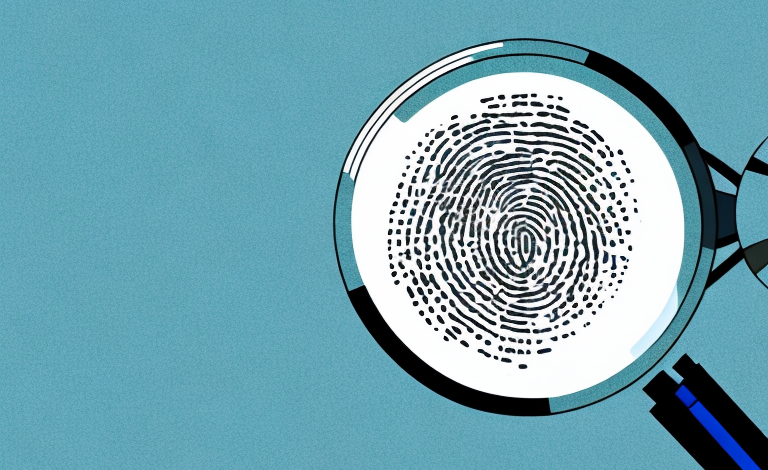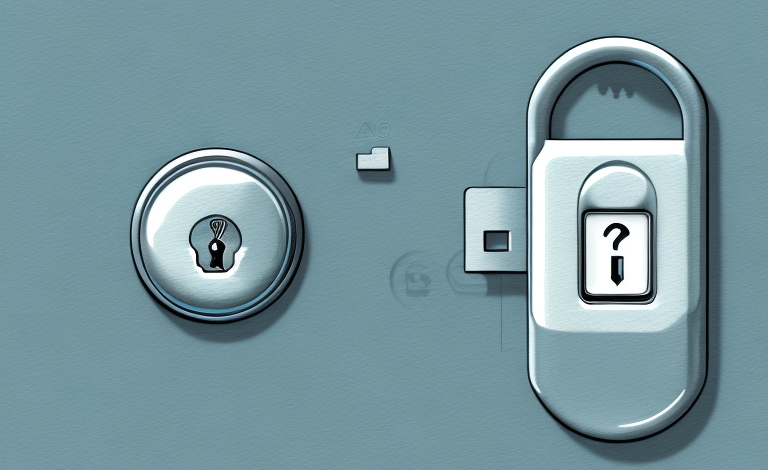Fingerprints have long been used for identification purposes, and with good reason. While the patterns on the ridges of our fingertips may seem random, they are actually highly individualized, unique to each person. But as technology continues to advance, and more people around the world are fingerprinted for a variety of reasons, some people have begun to wonder: will fingerprints ever repeat?
The science behind fingerprint formation
In order to answer this question, it’s important to understand how fingerprints are formed in the first place. Fingerprint patterns are created in the womb, as the skin on our fingers begins to grow and develop. Tiny ridges emerge, and these ridges form the patterns that will ultimately become our fingerprints. While the exact formation process is not fully understood, we do know that a number of factors can affect the development of fingerprints, including genetics, environmental factors, and even random chance.
One interesting fact about fingerprints is that they are unique to each individual. Even identical twins have different fingerprints. This is because the formation of fingerprints is influenced by a combination of genetic and environmental factors, which are unique to each person.
Fingerprints have been used for identification purposes for over a century, and they continue to be an important tool for law enforcement and forensic investigations. The unique patterns and characteristics of fingerprints can be used to link suspects to crime scenes, and to identify victims of accidents or disasters. In recent years, advances in technology have made it possible to analyze fingerprints more quickly and accurately, making them an even more valuable tool for solving crimes.
The uniqueness of fingerprints explained
One of the reasons that fingerprints have been such a valuable tool for identification purposes is that no two prints are exactly alike. The patterns on our fingers are incredibly complex, with ridges that curve, fork, and intersect in intricate ways. Even twins, who share very similar genetic material, will have unique prints. This is because fingerprints are not just determined by our DNA, but also by other factors such as the pressure and movements of our fingers in the womb.
Another interesting fact about fingerprints is that they can change over time. As we age, our skin loses elasticity and the ridges on our fingers can become less pronounced. This can make it more difficult to obtain clear prints for identification purposes. Additionally, certain medical conditions or injuries can also alter the appearance of fingerprints.
Despite these challenges, fingerprints remain a highly reliable form of identification. In fact, the use of fingerprints for identification dates back to ancient Babylon, where fingerprints were used on clay tablets for business transactions. Today, fingerprints are used not only in criminal investigations, but also for access control to secure areas and for immigration and border control purposes.
How fingerprints are used in criminal investigations
Despite the complexity of the patterns that make up our fingerprints, technology has advanced to the point where these patterns can be quickly and easily scanned and compared. This has made fingerprinting a key tool in criminal investigations, as investigators can compare prints found at a crime scene to prints in a database and quickly identify potential suspects. In some cases, this can be the key to solving a case that might otherwise go unsolved.
Furthermore, fingerprints can also be used to exonerate innocent individuals who have been wrongly accused or convicted of a crime. By comparing the fingerprints found at a crime scene to those in a database, investigators can rule out individuals who were not present at the scene of the crime. This can be especially important in cases where there is little other evidence to go on, and can help prevent wrongful convictions.
The history of fingerprint analysis
The use of fingerprints for identification purposes dates back over a century, when researchers first began to recognize the potential of fingerprints for this purpose. Over time, fingerprint analysis has become more sophisticated, with the development of advanced scanning and comparison technologies. Today, fingerprints are used not just in criminal investigations, but also in a variety of other contexts, from border security to financial transactions.
One of the most significant advancements in fingerprint analysis was the development of automated fingerprint identification systems (AFIS) in the 1980s. AFIS uses computer algorithms to compare and match fingerprints, greatly increasing the speed and accuracy of identification. This technology has revolutionized law enforcement and has been instrumental in solving countless crimes. In addition, the use of fingerprints in biometric authentication has become increasingly common in recent years, with many smartphones and other devices using fingerprints as a secure and convenient way to unlock and access personal information.
Can two people have the same fingerprints?
Given how complex and unique fingerprints are, it might seem unlikely that two people could ever have the exact same pattern. And yet, as it turns out, this is theoretically possible (though highly unlikely). While the probability of two people having the same fingerprints is incredibly low, it is not zero. This is because fingerprints are not determined solely by genetics, but also by other factors such as fetal development and chance.
Interestingly, identical twins do not have the same fingerprints. While they may have very similar patterns, there are still subtle differences that set them apart. This is because fingerprints are not only influenced by genetics, but also by environmental factors such as pressure and movement in the womb. Additionally, fingerprints can change over time due to injury or certain medical conditions, further decreasing the likelihood of two people having the same exact pattern.
The limitations of fingerprint recognition technology
Fingerprint analysis has come a long way in recent years, but there are still some limitations to this technology. For example, if a fingerprint is not left fully formed, it may be difficult to extract useful information from it. Additionally, there may be cases where a person’s fingerprints are obscured or altered in some way, making identification more difficult. In some cases, law enforcement may also face challenges in obtaining high-quality prints to compare to those in a database.
Another limitation of fingerprint recognition technology is that it can be susceptible to false positives and false negatives. False positives occur when the system incorrectly matches a fingerprint to a person who is not a match, while false negatives occur when the system fails to match a fingerprint to a person who is a match. This can be due to factors such as poor image quality or errors in the database.
Furthermore, fingerprint recognition technology may not be suitable for all situations. For example, in cases where a suspect has intentionally altered their fingerprints, such as through surgery or the use of chemicals, the technology may not be effective. In these cases, other forms of biometric identification, such as facial recognition or iris scanning, may be more appropriate.
Fingerprint identification in security systems
Fingerprints are increasingly being used in security systems, from smartphones to biometric access controls. While this can be a highly effective way to secure sensitive information and locations, there are also potential risks to privacy and security. Some experts warn that there is a risk of hackers or others gaining access to fingerprint databases, potentially compromising the security of millions of people’s personal information. As with any technology, it’s important to carefully consider the potential risks and benefits of fingerprint identification systems.
How to keep your fingerprints secure and private
If you are concerned about the security of your fingerprints, there are some steps you can take to protect your privacy. For example, be wary of sharing your fingerprints with anyone you don’t trust, and be careful about where you leave prints in public places. Additionally, there are now products on the market that claim to help protect your fingerprints from being scanned or copied.
The future of fingerprint analysis and technology advancements
As technology continues to advance, we can expect to see further developments in the field of fingerprint analysis. For example, some researchers are exploring the possibility of developing new scanning technologies that can detect more detailed information about fingerprint patterns. Others are investigating the use of artificial intelligence and machine learning to help analyze and compare large amounts of fingerprint data. As these and other technologies continue to evolve, we can expect to see even more accurate and effective fingerprint analysis tools in the years to come.
Famous cases solved by fingerprint evidence
There have been many high-profile criminal cases where fingerprint evidence played a key role in solving the crime. Perhaps one of the most famous of these cases was the Lindbergh baby kidnapping case in 1932, where the kidnapper left a ransom note and a ladder behind. Investigators were able to find a single fingerprint on the ransom note, which ultimately led to the arrest and conviction of the infamous German immigrant Bruno Richard Hauptmann.
Fingerprint analysis around the world: a comparative study
Fingerprint analysis is used around the world, but different countries and regions may have different approaches and technologies when it comes to this field. For example, some countries may prioritize fingerprint analysis as a tool for identifying potential terrorists or other security threats, while others may focus more on using fingerprints for border security or criminal investigations. Research comparing different approaches to fingerprint analysis can help us gain a better understanding of the potential benefits and limitations of this technology in different contexts.
How to improve the accuracy of fingerprint analysis
Despite the accuracy of modern fingerprint analysis techniques, there is always room for improvement. Researchers are constantly exploring new ways to improve these technologies, from developing more detailed scanning technologies to using artificial intelligence to analyze large amounts of data. Other researchers are exploring the use of more advanced statistical methods to help quantify the accuracy and confidence levels of fingerprint analysis results.
Ethical considerations in using fingerprints for identification and surveillance
As with any technology, there are ethical considerations to consider when it comes to using fingerprints for identification and surveillance purposes. For example, some people may be uncomfortable with the idea of having their fingerprints scanned and stored in a database, even if this is done for security purposes. Others may worry about the potential for discrimination or bias in how fingerprint analysis results are used. As these technologies become more widespread, it’s important to carefully consider these ethical considerations and work to ensure that fingerprint analysis is used in a fair and transparent manner.
Misconceptions about fingerprints debunked
There are many misconceptions about fingerprints that are still widely believed today. For example, some people may believe that altering their prints in some way can help them elude detection. In reality, however, this is unlikely to be effective, as modern fingerprint analysis techniques are able to identify altered or obscured prints in most cases. Similarly, some people may believe that twins have identical fingerprints, when in reality this is extremely unlikely. By understanding and debunking these myths, we can gain a better understanding of the true potential of fingerprint analysis and its role in identification and security.
So, will fingerprints ever repeat? While it is theoretically possible, the chances of it happening are incredibly small. Despite the complexity and variability of fingerprint patterns, modern technology has made it possible to compare and analyze these patterns quickly and accurately, making fingerprints a valuable tool for a wide range of identification and security purposes. As technology continues to advance, we can expect even more sophisticated and effective fingerprint analysis tools in the years to come.



